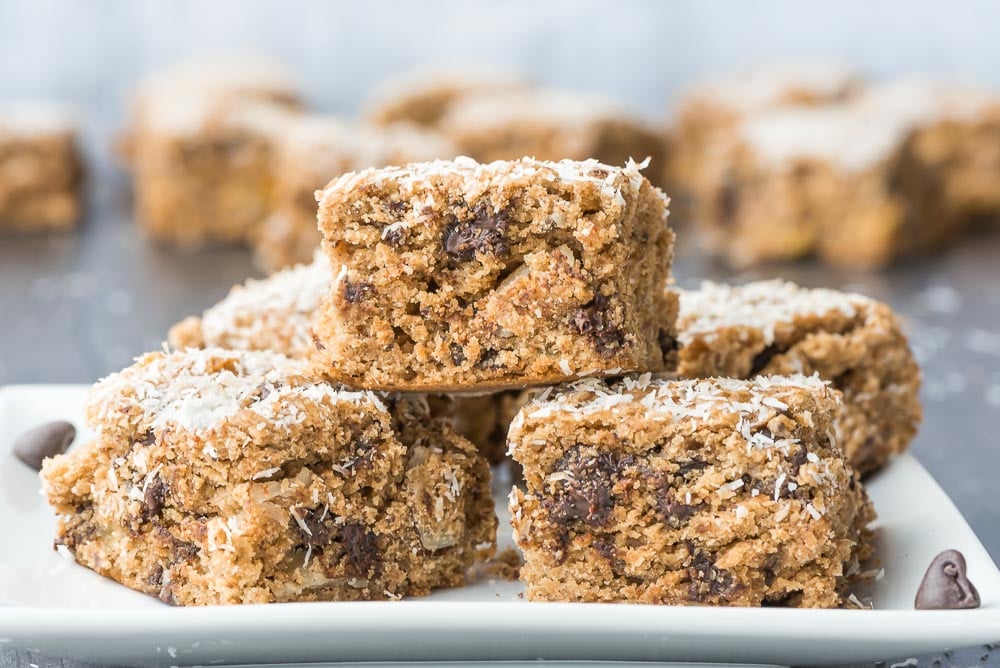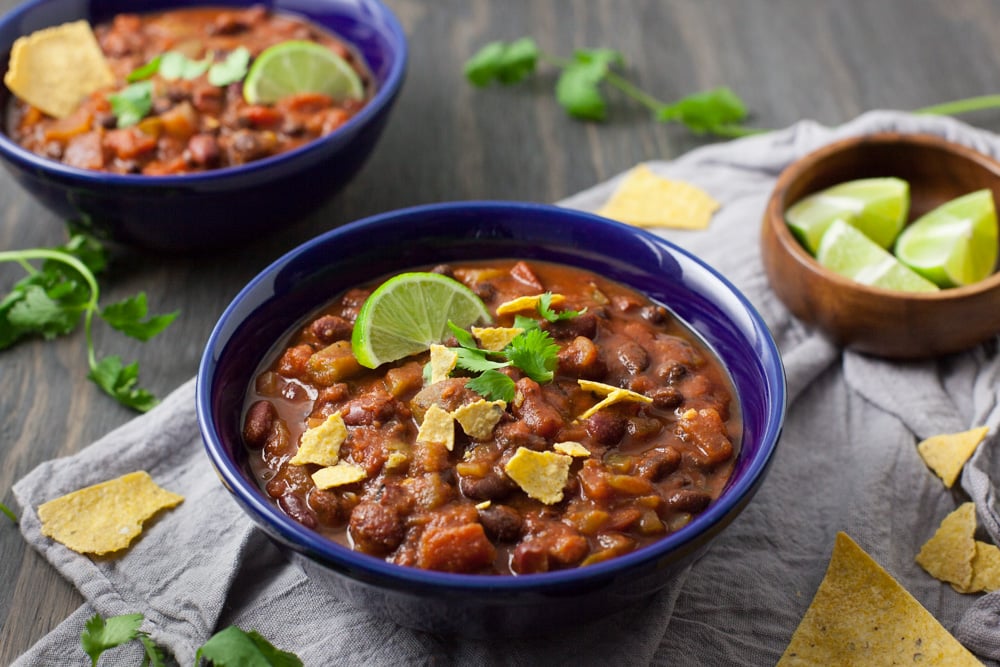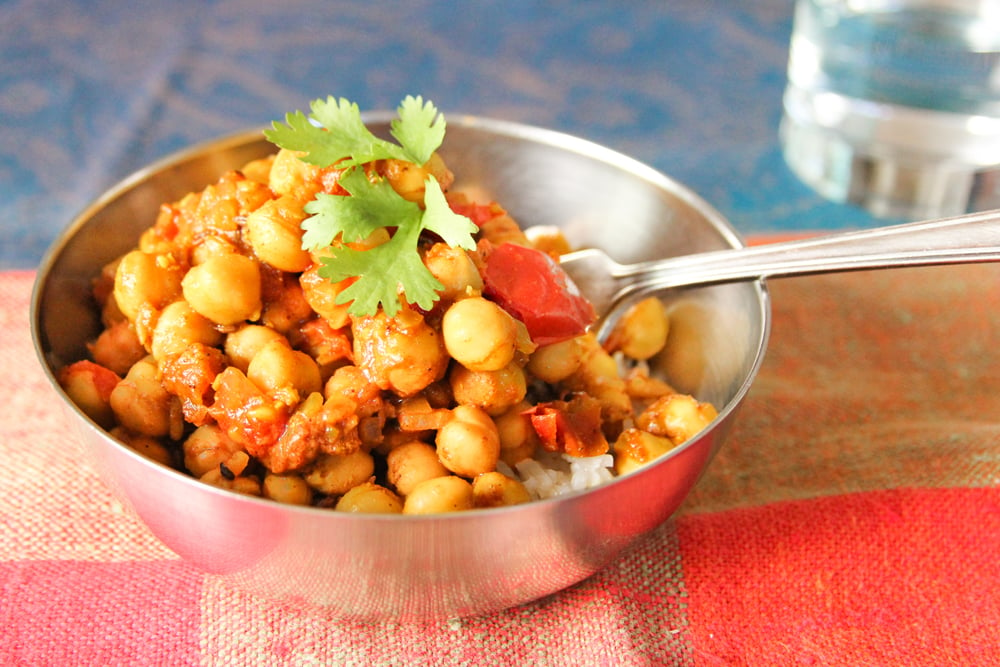A Simple Blueprint to Going Vegan or Whole-Food Plant-Based

By Molly Patrick
Nov 24, 2015,
By Molly Patrick
Nov 24, 2015,
If you’re new to filling up on plants and removing meat and dairy from your diet you probably have a lot of questions and pre-conceived ideas. There’s a lot of information out there, and it’s easy to get overwhelmed. But don’t worry, I’ve got a simple blueprint for going vegan or whole-food plant-based, and I’m going to share it with you.
You might assume that there will be fewer choices for you when it comes to what you’re eating, but you’ll soon realize the opposite is true. Yes, you’re taking out a few entire categories of food, but you’ll be adding in way more variety of foods than you take out.
No, you won’t be eating chicken, cows, pigs, or any animal products for that matter. But do you know how many varieties of veggies there are in the world? And fruits? And beans? And grains? Literally tens of thousands each. When the meat and dairy doors close, the world of whole plant foods opens up. The combinations are endless, and you’ll soon see that this way of eating is abundant, full of possibilities, and overflowing with options.
How are vegan and whole-food plant-based diets different?
I’m going to give you a helpful blueprint to help you navigate the world of plant based eating, but first, let’s start with some of the differences between a vegan and whole-food plant-based diet.

Vegan diet
- A vegan diet is a lifestyle that excludes all meat, dairy, eggs, and anything made from or produced by animals, including honey and leather.
- People go vegan for many reasons, the most common being ethical (compassion for animals), environmental (to help reduce their carbon footprint), and health.
- Vegan foods can be found in most grocery stores.
- Vegan foods can include oil, sugar, and other highly-processed ingredients
Whole food plant based (WFPB) diet
- WFPB is a way of eating that focuses primarily on whole plant foods and avoids meat, dairy, eggs, and highly-processed foods, like white sugar and oil.
- The biggest reason we see for people switching to a WFPB diet is that they want to improve their health, both mental and physical. The ethical and environmental impacts of this way of eating are really nice perks, though.
- WFPB-compliant foods are harder to find ready-to-eat in grocery stores. Embracing a WFPB diet often entails preparing your meals from scratch, as these nutritious choices are primarily crafted from whole, unprocessed ingredients.
- A WFPB diet does not include oil, highly refined sugar, or highly processed ingredients.

In a nutshell
Vegan and WFPB diets are similar in that they both avoid animal ingredients and products derived from animals in the diet. Vegan and whole-food plant-based diets are different in that WFPB eating emphasizes foods made from whole, minimally processed plants. Whether you’re going vegan or whole-food plant-based, I can help.
Now, here’s my simple blueprint for going vegan or whole-food plant-based
Keep in mind, we all start somewhere, and it helps to meet yourself where you are instead of trying to be perfect. Changing how, what, and why you eat a certain way is a unique, personal process. You can do it in whatever way feels best for you, there is no one way forward. Your path is perfect for you. Now grab that pen and paper.
Step one: How you’re currently eating
Write down what a typical day of eating currently look like for you. Include breakfast, lunch, dinner, and snacks. Here’s an example of what that might look like:
Breakfast:
Bacon, two eggs, toast with butter, a banana, and milk
Lunch:
Turkey sandwich with mayo, tomatoes, lettuce, and mustard with sour cream and onion potato chips
Dinner:
Spaghetti and meatballs with marinara sauce, garlic bread, and a side salad with ranch dressing
Snacks:
Cheese and crackers and a candy bar
Step two: Envision your day on a vegan diet
Look at the meals you wrote down and cross out anything that wouldn’t be included in your new way of eating. Then, write in vegan alternatives in place of everything you crossed out.
Breakfast:
Vegan bacon, two vegan eggs (yes, they’re a thing!), toast with vegan butter, a banana, and plant milk
Lunch:
Sandwich with vegan meat replacement, vegan mayo, tomatoes, lettuce, and mustard with dairy-free potato chips
Dinner:
Spaghetti with imitation meatballs and marinara sauce, vegan garlic bread made with oil instead of butter, and a side salad with vegan ranch
Snacks:
Vegan cheese and crackers and a vegan candy bar
With a little tweaking, this day of meals went from lots of animal ingredients to none. Will it taste exactly the same? Vegan foods like faux meats and cheeses have come a long way, with many options that are tasty and helpful for people just starting out on their meat and dairy-free adventures. That said, most vegan versions of meat and dairy products won’t taste exactly the same. It’s best to go into this knowing that so you won’t be disappointed. It’s also good to know that your palate will change the longer you eat this way, so stuff you don’t love now will become yummy to you sooner than you think.
Now let’s play it out with a whole-food plant-based focus.
Step three: Envision your day on a whole-food plant-based diet
Along with taking the meat, dairy, and eggs out of the meals you wrote down, you would also take out anything highly processed, including foods made with oil and refined sugar, and replace them with whole-food plant-based options instead. Let’s take a look at my replacements in green.
Breakfast:
Tofu bacon scramble with vegggies, two eggs, toasted sprouted bread with almond butter, a banana, and plant milk
Lunch:
Baked Tofu Sandwich on sprouted bread with Lemon Tahini Dressing mayo, tomatoes, lettuce and mustard, and a side of steamed broccoli with coconut aminos and sesame seeds and potato chips
Dinner:
Whole wheat spaghetti with lentil meatballs and homemade, oil-free marinara sauce, and a side salad with Cashew Ranch
Snacks:
Hummus and Cucumber Rounds crackers and a few nut-butter stuffed dates candy bar
With some minor adjustments, you’re left with a hearty, nutrient-rich day of eating powered by whole plant foods.
Step 4: Decide if you want to try eating following a vegan or whole-food plant-based diet
Do you want to try eating a vegan diet and ditch the meat, dairy, and eggs, or do you want to try a whole-food plant-based diet that focuses on whole plant foods while ditching meat, dairy, eggs, and highly processed items?
This is totally up to you. I promote a whole-food plant-based way of eating because it’s the most nutrient and fiber-dense way of eating, but if you want to start transitioning with vegan foods and work towards whole plant foods, that’s awesome too.
You can even do a mix, or start with adjusting just one meal a day. There’s no right or wrong way to do this.
Whether you try out vegan eating or whole-food plant-based eating, following this blueprint for a week will help you feel the positive impact on your life and health.
There are so many reasons to go plant based. From physical health to climate change, and mental wellness to the welfare of animals. We have helped thousands of people transform their lives with plants in with the most delicious whole-food plant-based recipes in the world. Sign up for a free trial of Clean Food Dirty Girl, our premium membership, and explore meal plans, how-to videos, and more. We also have loads of free whole-food plant-based recipes to start off with.
We are cheering you on, and we’re here to help you on your plant based journey.
I hope that you have a happy week. May it be filled with easy transitions.
Before you go, tell us what sparked your interest in eating more plants in the comments below!
Xo
Molly
P.S. If you’re looking for a great beginner recipe, this Vegan/WFPB Tempeh Sloppy Joe is ready for your mouth. It will turn tempeh skeptics into tempeh believers. Trust me, just make this – it’s insanely satisfying. Share a picture with our private Facebook group when you make it!
6 Comments
Leave a Comment
Love the food that loves you back
Get instant access to thousands of plant-based recipes and meal plans, no credit card or perfection required.














This is hilarious! I really was laughing out loud. The Dolly Parton reference made my list of Best One-liners of 2015.
I’ve been vegetarian since my teens, and just-about-vegan for a few years (yeah, cheese is hard to give up, yogurt once in awhile, and milk in coffee sometimes. But eating animal stuff in general is just gross to me). Thing is, I get busy and distracted or have various calamities all happen at once—or whatever, a few things are tough right now—and I fall back into my trap that’s not so different from what you describe. Granola (even home-made muesli) or oatmeal for breakfast (with almond milk usually, often homemade), cheese sandwich or hoagie, rice and beans, pasta with beans (like garbanzo) or broccoli or tomatoes/tomato sauce, maybe a veggie pad thai with tofu or veggie curry with cashews or tempeh—if I make the effort, which isn’t often. Or quinoa veggie burgers from Trader Joe’s or other processed vegan option—TJ’s packaged Indian food is pretty good, and hummus with crackers is fine for dinner, as far as I’m concerned. Snacks are fruit, generally. Not much for sweets here, fortunately. But I don’t often eat that well. Today was not great—cereal, then the pasta/tomato sauce/TJ quinoa burger, then some crackers. Some coconut water and a banana. Veggies take time to cut up and all that…cooking, then you have dishes to wash…~whine~ lol
So I want to do better, and the webinar sounds great! The meal plans, too, so I signed up. I like that the BBQ tempeh can be frozen. I’m just not into cooking though I’m perfectly capable. But I really want to get some sort of routine or habit going here—it’s just too important. Looking forward to it!
Hi Leah –
I’m super glad you signed up for my webinar.
I’m sharing a ton of info and I think you will find it really useful and refreshing. It sounds like you’re on the right track!
xo
Molly
I’m really happy to have found your blog. I’m a middle aged guy trying to lose weight and get rid of some health issues. I recently tried low carb and hated it, felt awful. I’ve tried plant based recipes before but usually found them lacking and not very tasty or, on occasion, really good but obviously unhealthy. But your recipes have changed that! This sloppy joe recipe is so incredibly flavorful and the lemon tahini sauce is amazing! My boyfriend tasted it and said he was going to steal some of my lunches this week. I’m hoping to go to about 80 percent plant based, I don’t seem to do well at 100 percent. And I’m really hoping this will improve my health. Thanks for the great recipes! Also, I love the Saturday fuckery!
Hey Tom –
So happy to hear this! Keep up the awesome work.
xo
Molly
I would make one more suggestion: be sure to find a high-quality, absorbable B-12 supplement. Most B-12
supplements on the market are not absorbed by the human digestive system and may even do more damage than good. Older adults with comorbidities may be prone to blood clots, embolisms or even strokes due to B-12 deficiency. Make sure you see your doctor for a blood test when you start a WFPB diet and follow up every six months for a year or two so he can monitor your health. I found out the hard way by suffering a DVT and a pulmonary embolism. Keep in mind that all these studies comparing WFPB eaters to carnivores only run for a couple of months. They don’t show the effects of the diet after two years.
Don’t get me wrong, WFPB diet has many amazing benefits, just be sure to consult with your doctor or nutritionist when making a drastic diet change.
I’ve been WFPB for years! Your recipes are delicious and flavorful! And your Saturday letters are the best! Wishing you strength in your move and much peace in your new home! ❤️